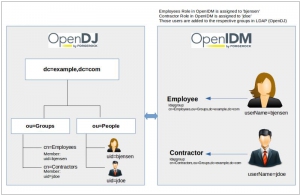ForgeRock vs Keycloak
March 07, 2025 | Author: Michael Stromann
12★
Learn why businesses and governments trust ForgeRock identity and access management solutions for everything from CIAM to IoT. Protect, connect, and manage the digital identities of people, devices, and the internet of things (IoT). We help large organizations secure the identity of anything, build trusted, personalized relationships with their customers, and provide a seamless omnichannel experience.
11★
Keycloak is an open source identity and access management solution for modern Applications and Services. Add authentication to applications and secure services with minimum fuss.
ForgeRock and Keycloak are two identity and access management solutions, which is a fancy way of saying they stop people from wandering into places they shouldn’t be. Both provide Single Sign-On, OAuth2 and various other acronyms designed to make logging in either seamless or deeply frustrating, depending on whether the admin remembered to configure it properly. They also support multi-factor authentication, which means you’ll need your phone, your email and possibly a blood sample just to check your bank balance. The good news is that both are extensible, meaning that if they don’t do exactly what you need, you can spend weeks tweaking them until they almost do.
ForgeRock, the elder of the two, emerged in 2010 from the digital ashes of Sun Microsystems’ OpenSSO, determined to bring identity management to the world in a way only a well-funded American enterprise software company could. It is particularly fond of large corporations, financial institutions and governments, all of whom like things to be secure but also scalable enough to handle millions of employees who regularly forget their passwords. It even has its own cloud-native platform, which means it can exist both everywhere and nowhere at the same time, like a particularly well-organized ghost.
Keycloak, on the other hand, was born in 2014 under the nurturing gaze of Red Hat in the Netherlands, a country known for its canals, bicycles and apparently, open-source security solutions. Unlike its corporate cousin, Keycloak is fully open-source and particularly beloved by developers, who enjoy configuring it in much the same way that some people enjoy assembling flat-pack furniture—enthusiastically at first, then with increasing frustration. It integrates smoothly with Java applications, though scaling it for large enterprises requires some additional work, much like trying to turn a small dinghy into an aircraft carrier.
See also: Top 10 Identity Management platforms
ForgeRock, the elder of the two, emerged in 2010 from the digital ashes of Sun Microsystems’ OpenSSO, determined to bring identity management to the world in a way only a well-funded American enterprise software company could. It is particularly fond of large corporations, financial institutions and governments, all of whom like things to be secure but also scalable enough to handle millions of employees who regularly forget their passwords. It even has its own cloud-native platform, which means it can exist both everywhere and nowhere at the same time, like a particularly well-organized ghost.
Keycloak, on the other hand, was born in 2014 under the nurturing gaze of Red Hat in the Netherlands, a country known for its canals, bicycles and apparently, open-source security solutions. Unlike its corporate cousin, Keycloak is fully open-source and particularly beloved by developers, who enjoy configuring it in much the same way that some people enjoy assembling flat-pack furniture—enthusiastically at first, then with increasing frustration. It integrates smoothly with Java applications, though scaling it for large enterprises requires some additional work, much like trying to turn a small dinghy into an aircraft carrier.
See also: Top 10 Identity Management platforms





